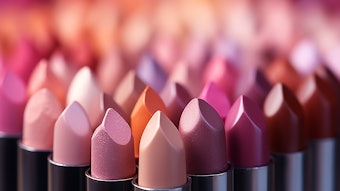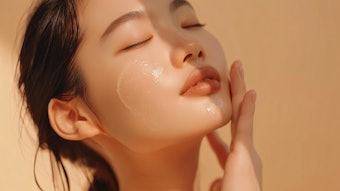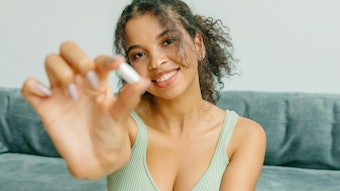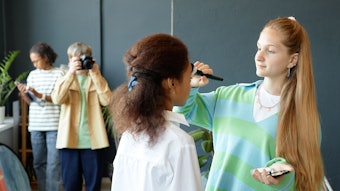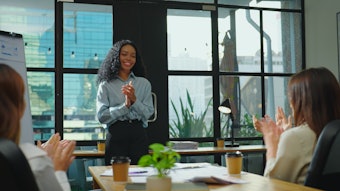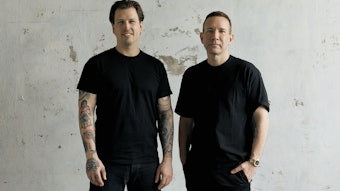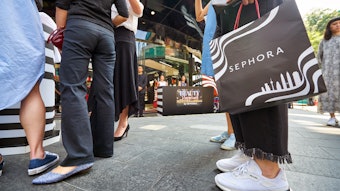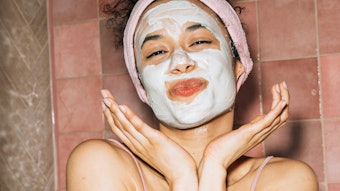Historically, fashion and beauty trends had to be seen in person to be imitated. They were often first observed in city centers and spread by word-of-mouth, and following the dawn of industrialization, they accelerated through travel, print media and television. There once were only a few localized centers of influence—such as Paris, London and New York—but technology has dispersed that influence globally and virtually.
In today’s 24/7 culture, trends can come from anywhere, and the instantaneous spread of ideas is redefining the role of cities as hotbeds for innovation and trend activity. As trends become more dynamic and fast-paced, they become more difficult to pinpoint and forecast long-term. While certain cities and regions are showing signs of becoming the next leading trend centers, beauty innovators need to be forward thinking and open to other areas of inspiration and influence in global trend creation.
Online Influence
On the global trek for what’s next, there is an increasingly shorter time span between what are considered new ideas versus old ideas. Technological advancements have opened up more networks of influence, as they enable greater access to and exchange of information at the click of a button. And with the pervasiveness of information, the authenticity and origin of a trend are instantly obscured.
As decentralization causes major shifts in the trends landscape, the lines of what define a “trendy city” are increasingly blurred. Influence is flowing as much from “spaces” as places, as virtual networks of influence emerge. Certain cities and regions have been viewed as influential because of the iconic associations they carry, but that gravitas is eroding. Milan, for example, has long been lionized as a go-to fashion mecca, but the once-exclusive runway shows are now globally streamed, and virtual runway shows are becoming commonplace.
On Trend
Some iconic centers for beauty innovation still remain influential at shaping global product trends, however. South Korea has become recognized as a leader in technological beauty innovation in skin care, continually pushing new developments in treatments such as lasers, photo facials and stem cell therapy.
Beaucell, a stem cell-based anti-aging skin care line hailing from South Korea, has been referred to as the “holy grail of skin care.” This regimen of creams and serums consists of stem cells from adult bone marrow and excess body fat tissue to make skin appear thicker and firmer in just a few weeks. Also, Masqueology, a new, mask-based skin care line developed in South Korea, is just one of many advanced skin care solutions that are starting to hit the shelves of Sephora and other beauty boutiques worldwide. And Seoul, South Korea’s capital and largest city, has become a hub for cosmetic surgery, where hundreds of clinics known for their cutting-edge technology are nestled in the city’s “beauty belt.”
But technology also has opened a window to many exciting and influential newcomers, inspiring a new generation of beauty innovation with their culture and tradition. India’s influence accelerated when the nation upgraded to a 3G wireless network in 2011, and their ancient practices and beauty rituals have begun influencing many facets of the beauty realm. Ayurveda, the ancient medicinal system rooted in natural and herbal remedies, was at least partially introduced to the mainstream market by Aveda, a botanical beauty brand that offers plant-based products based in ayurvedic principles. The ancient healing system has since experienced a second wave of influence, inspiring a variety of holistic beauty products, services and practices.
India’s culture and traditions have also inspired many new product trends that are emerging in the cosmetics and hair care segments. Paris-based Clarins recently introduced Enchanted, a line of cosmetics that was inspired by Holi, the Hindu festival of colors. The Enchanted Color Quartet & Liner Palette features bright and bold eye shadows, and the intensely pigmented and creamy eyeliner (kajal) that has been a part of Indian women’s beauty routines for centuries.
Another age-old beauty ritual that is driving new product development is oiling the hair and scalp. India Hair-Yurvedics, a new hair care brand from I.C.O.N., incorporates ancient practices with the restorative oils of moringa and argan to provide healing, strength, luster, well-being and tranquility to beauty consumers.
Remote Beauty
As cool hunters continue their quest for the fountain of youth, exploring areas of isolation could lead to new influential spaces. Though isolated regions are increasingly rare in our digitally connected world, they were once known to develop their own styles and became recognized as influencers, such as Austrian Biedermeier style (Europe found peace in simplicity after Napoleon’s final defeat) or American casual wear (the U.S. fashion industry was born after being cut off from European influence during World War II).
Bali, an Indonesian province, is a remote island that has been long considered a haven for secluded refuge, but it is now becoming more known for holistic remedies, relaxation opportunities, and its own distinct beauty routines and styles. A weekly ritual for locals is the cream bath, a traditional Indonesian treatment beneficial in optimizing hair elasticity, encouraging hair growth and repairing damaged hair. The process includes a shampoo, a scalp massage, an avocado hair mask under steam, more massage (of the shoulders and arms), another wash and scalp tonic, all finished with a blow dry. Despite the intense humidity of the island, Balinese women appear beautifully put together from their peacock-hued eyes to their perfectly coiffed hair.
Similarly, women in the Caribbean’s Dominican Republic swear by fresh garlic-infused polish to keep their nails super strong. And in the Aboriginal communities of Australia, women rely on yarrow root extract to prevent stretch marks because of its moisturizing and anti-inflammatory properties.
Another region that is beginning to gain attention is Myanmar in Southeast Asia. This once-secretive country is opening up to the world after decades of isolation and military rule, becoming a prime target for expansion opportunities. Without having the ability to be influenced by the outside, could places like Myanmar hold the best-kept beauty secrets of the future?
Modern Meccas
Moving from once-discreet capitals of inspiration to networked hotbeds and virtual hubs, cultures merge, mend and fuse creating new inspirational territory. Hong Kong is China’s most liberated, vocal and edgy city with a broad range of cultural and generational influences. Offering more than 11,000 restaurants, a vibrant nightlife and booming indie music and literary scenes, it draws in a trendy crowd and appeals to consumer desires for a variety of experiences.
Antwerp, Belgium, is another city on the map of trend incubators. With its diversified subcultures and medieval-meets-modern style, it’s home to an array of influencers from world-acclaimed fashion designers to art lovers and diamond dealers.
As trends tend to be multiplistic and overlapping in nature, these areas of endless inspiration show signs of trends emerging as an amalgam of cultural and generational influences. Blending varying beauty ideals, values and practices could result in cross-cultural mash-ups that change the future face of beauty worldwide.
The Mix of Beauty and Power
Cultural power and influence no longer rest simply at the seat of the large, civic hubs as self-organized communities challenge the fundamental understanding of what constitutes a city. Technology has unleashed a centrifugal force that has flung ideas and memes away from cities and traditional centers of influence out to small flash communities at the fringes, each with their own distinct language, cultures and demographics. As cities shift and evolve from physical locales to virtual spaces, they are translating into platforms for new influence.
Teen fashion blogger Tavi Gevinson, for example, is known throughout the blogosphere for her influence on the global beauty and fashion worlds. She began her online empire at the age of 13, and has now expanded her influence into traditional forms of media: print, radio and television. As social media platforms and online communities further drive decentralization, it is entirely possible that the next game-changing innovators in the beauty realm be virtually based.
Today’s technology has created a world where provenance is a luxury, and finding undiscovered or untouched sources of influence is more challenging. Understanding how trends behave and reflect cultural shifts will help identify the signs and signals for areas of influence on the horizon. The continued fascination with cultural traditions, fusions and what is “foreign” will be expected to drive global beauty trend creation and instigate future innovation.
Valerie Jacobs is a group director for LPK Trends and a design forecaster focusing on the development of trend analysis for LPK client brands. Jacobs is also a professor at the University of Cincinnati College of Design, Architecture, Art and Planning, and is a guest lecturer for the In-Store Marketing Institute, Design Management Institute and the Industrial Designers Society of America.

